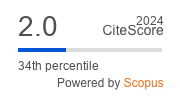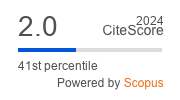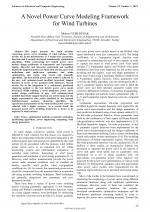| 3/2019 - 4 |
A Novel Power Curve Modeling Framework for Wind TurbinesYESILBUDAK, M. |
| Extra paper information in |
| Click to see author's profile in |
| Download PDF |
Author keywords
optimization methods, parameter estimation, partitioning algorithms, power engineering computing, wind energy generation
References keywords
wind(22), power(20), energy(17), curve(13), turbine(11), renewable(7), algorithm(6), systems(5), optimization(5), modeling(5)
Blue keywords are present in both the references section and the paper title.
About this article
Date of Publication: 2019-08-31
Volume 19, Issue 3, Year 2019, On page(s): 29 - 40
ISSN: 1582-7445, e-ISSN: 1844-7600
Digital Object Identifier: 10.4316/AECE.2019.03004
Web of Science Accession Number: 000486574100004
SCOPUS ID: 85072171926
Abstract
This paper presents two main novelties concerning power curve modeling of wind turbines. First novelty lies in the hybridization of 5 widely-used parametric functions and 8 recently-developed metaheuristic optimization algorithms. While constructing new hybrid power curve models, design coefficients of 4-parameter and 5-parameter logistic, 5th-order and 6th-order polynomial and modified hyperbolic tangent functions are fitted with ant lion, grey wolf, moth-flame and multi-verse optimizers and whale optimization, sine cosine, salp swarm and dragonfly algorithms. The best hybrid power curve model is achieved by the grey wolf optimizer-based modified hyperbolic tangent function in terms of the goodness-of-fit indicators. Second novelty lies in the integration of a well-known partitional clustering method to the best hybrid power curve model developed. While building a novel integrative power curve model, design coefficients of grey wolf optimizer-based modified hyperbolic tangent function are solved using only the highly representative data points identified by the Squared Euclidean-based k-means clustering algorithm. The operational characteristics of the wind turbine power curve are reflected with a higher accuracy. As a crucial result, the proposed power curve modeling framework is shown to be superior for wind turbines. |
| References | | | Cited By «-- Click to see who has cited this paper |
| [1] E. Sainz, A. Llombart, J. J. Guerrero, "Robust Filtering for the Characterization of Wind Turbines: Improving Its Operation and Maintenance", Energy Conversion and Management, vol. 50, no. 9, pp. 2136-2147, 2009. [CrossRef] [Web of Science Times Cited 48] [SCOPUS Times Cited 70] [2] M. Lydia, S. S. Kumar, A. I. Selvakumar, G. E. P. Kumar, "Wind Resource Estimation Using Wind Speed and Power Curve Models", Renewable Energy, vol. 83, pp. 425-434, 2015. [CrossRef] [Web of Science Times Cited 39] [SCOPUS Times Cited 44] [3] A. Marvuglia, A. Messineo, "Monitoring of Wind Farmsâ Power Curves Using Machine Learning Techniques", Applied Energy, vol. 98, pp. 574-583, 2012. [CrossRef] [Web of Science Times Cited 166] [SCOPUS Times Cited 192] [4] L. C. Pagnini, M. Burlando, M. P. Repetto, "Experimental Power Curve of Small-Size Wind Turbines in Turbulent Urban Environment", Applied Energy, vol. 154, pp. 112-121, 2015. [CrossRef] [Web of Science Times Cited 153] [SCOPUS Times Cited 181] [5] H. Long, L. Wang, Z. Zhang, Z. Song, J. Xu, "Data-Driven Wind Turbine Power Generation Performance Monitoring", IEEE Transactions on Industrial Electronics, vol. 62, no. 10, pp. 6627-6635, 2015. [CrossRef] [Web of Science Times Cited 71] [SCOPUS Times Cited 83] [6] T. P. Chang, F. J. Liu, H. H. Ko, S. P. Cheng, S. C. Kuo, "Comparative Analysis on Power Curve Models of Wind Turbine Generator in Estimating Capacity Factor", Energy, vol. 73, pp. 88-95, 2014. [CrossRef] [Web of Science Times Cited 100] [SCOPUS Times Cited 127] [7] J. Yan, T. Ouyang, "Advanced Wind Power Prediction Based on Data-Driven Error Correction", Energy Conversion and Management, vol. 180, pp. 302-311, Jan. 2019. [CrossRef] [Web of Science Times Cited 75] [SCOPUS Times Cited 96] [8] S. Seo, S. D. Oh, H. Y. Kwak, "Wind Turbine Power Curve Modeling Using Maximum Likelihood Estimation Method", Renewable Energy, vol. 136, pp. 1164-1169, 2019. [CrossRef] [Web of Science Times Cited 46] [SCOPUS Times Cited 58] [9] C. Kamalakannan, L. Padma, S. S. S. Dash, B. K. Panigrahi, "Power Electronics and Renewable Energy Systems", pp. 1407-1414, Springer, 2015. [10] M. Lydia, A. I. Selvakumar, S. S. Kumar, G. E. P. Kumar, "Advanced Algorithms for Wind Turbine Power Curve Modeling", IEEE Transactions on Sustainable Energy, vol. 4, no. 3, pp. 827-835, 2013. [CrossRef] [Web of Science Times Cited 182] [SCOPUS Times Cited 232] [11] D. Villanueva, A. Feijoo, "Comparison of Logistic Functions for Modeling Wind Turbine Power Curves", Electric Power Systems Research, vol. 155, pp. 281-288, 2018. [CrossRef] [Web of Science Times Cited 60] [SCOPUS Times Cited 70] [12] M. Marciukaitis, I. Zutautaite, L. Martisauskas, B. Joksas, A. Sfetsos, "Non-Linear Regression Model for Wind Turbine Power Curve", Renewable Energy, vol. 113, pp. 732-741, 2017. [CrossRef] [Web of Science Times Cited 90] [SCOPUS Times Cited 107] [13] B. K. Saxena, K. V. S. Rao, "Comparison of Weibull Parameters Computation Methods and Analytical Estimation of Wind Turbine Capacity Factor Using Polynomial Power Curve Model: Case Study of a Wind Farm", Renewables: Wind, Water, and Solar, vol. 2, no. 3, pp. 1-11, 2015. [CrossRef] [14] E. Taslimi-Renani, M. Modiri-Delshad, M. F. M. Elias, N. A. Rahim, "Development of an Enhanced Parametric Model for Wind Turbine Power Curve", Applied Energy, vol. 177, pp. 544-552, 2016. [CrossRef] [Web of Science Times Cited 95] [SCOPUS Times Cited 114] [15] F. Pelletier, C. Masson, A. Tahan, "Wind Turbine Power Curve Modelling Using Artificial Neural Network", Renewable Energy, vol. 89, pp. 207-214, 2016. [CrossRef] [Web of Science Times Cited 153] [SCOPUS Times Cited 184] [16] X. Liu, "An Improved Interpolation Method for Wind Power Curves", IEEE Transactions on Sustainable Energy, vol. 3, no. 3, pp. 528-534, 2012. [CrossRef] [Web of Science Times Cited 17] [SCOPUS Times Cited 26] [17] A. K. Das, "An Empirical Model of Power Curve of a Wind Turbine", Energy Systems, vol. 5, no. 3, pp. 507-518, 2014. [CrossRef] [SCOPUS Times Cited 10] [18] C. Carrillo, A. F. Obando-Montano, J. Cidras, E. Diaz-Dorado, "Review of Power Curve Modelling for Wind Turbines", Renewable and Sustainable Energy Reviews, vol. 21, pp. 572-581, 2013. [CrossRef] [Web of Science Times Cited 262] [SCOPUS Times Cited 317] [19] M. Lydia, S. S. Kumar, A. I. Selvakumar, G. E. P. Kumar, "Comprehensive Review on Wind Turbine Power Curve Modeling Techniques", Renewable and Sustainable Energy Reviews, vol. 30, pp. 452-460, 2014. [CrossRef] [Web of Science Times Cited 359] [SCOPUS Times Cited 447] [20] S. Mirjalili, "The Ant Lion Optimizer", Advances in Engineering Software, vol. 83, pp. 80-98, 2015. [CrossRef] [Web of Science Times Cited 2366] [SCOPUS Times Cited 2985] [21] S. Mirjalili, S. M. Mirjalili, A. Lewis, "Grey Wolf Optimizer", Advances in Engineering Software, vol. 69, pp. 46-61, 2014. [CrossRef] [Web of Science Times Cited 12253] [SCOPUS Times Cited 15912] [22] S. Mirjalili, "Moth-Flame Optimization Algorithm: A Novel Nature-Inspired Heuristic Paradigm", Knowledge-Based Systems, vol. 89, pp. 228-249, 2015. [CrossRef] [Web of Science Times Cited 3254] [SCOPUS Times Cited 3989] [23] S. Mirjalili, S. M. Mirjalili, A. Hatamlou, "Multi-Verse Optimizer: A Nature-Inspired Algorithm for Global Optimization", Neural Computing and Applications, vol. 27, no. 2, pp. 495-513, Feb. 2016. [CrossRef] [Web of Science Times Cited 2782] [SCOPUS Times Cited 2477] [24] S. Mirjalili, A. Lewis, "The Whale Optimization Algorithm", Advances in Engineering Software, vol. 95, pp. 51-67, 2016. [CrossRef] [Web of Science Times Cited 9006] [SCOPUS Times Cited 11507] [25] S. Mirjalili, "SCA: A Sine Cosine Algorithm for Solving Optimization Problems", Knowledge-Based Systems, vol. 96, pp. 120-133, 2016. [CrossRef] [Web of Science Times Cited 3795] [SCOPUS Times Cited 4623] [26] S. Mirjalili, A. H. Gandomi, S. Z. Mirjalili, S. Saremi, H. Faris, S. M. Mirjalili, "Salp Swarm Algorithm: A Bio-Inspired Optimizer for Engineering Design Problems", Advances in Engineering Software, vol. 114, pp. 163-191, 2017. [CrossRef] [Web of Science Times Cited 3557] [SCOPUS Times Cited 4343] [27] S. Mirjalili, "Dragonfly Algorithm: A New Meta-Heuristic Optimization Technique for Solving Single-Objective, Discrete, and Multi-Objective Problems", Neural Computing and Applications, vol. 27, no. 4, pp. 1053-1073, 2016. [CrossRef] [Web of Science Times Cited 1127] [SCOPUS Times Cited 2406] [28] C. C. Aggarwal, C. K. Reddy, "Data Clustering: Algorithms and Applications", pp. 89-93, CRC Press, 2014. [29] Open Platform for French Public Data & ENGIE, [Online] Available: Temporary on-line reference link removed - see the PDF document [30] M. Yesilbudak, "Implementation of Novel Hybrid Approaches for Power Curve Modeling of Wind Turbines", Energy Conversion and Management, vol. 171, pp. 156-169, 2018. [CrossRef] [Web of Science Times Cited 43] [SCOPUS Times Cited 50] Web of Science® Citations for all references: 40,099 TCR SCOPUS® Citations for all references: 50,650 TCR Web of Science® Average Citations per reference: 1,294 ACR SCOPUS® Average Citations per reference: 1,634 ACR TCR = Total Citations for References / ACR = Average Citations per Reference We introduced in 2010 - for the first time in scientific publishing, the term "References Weight", as a quantitative indication of the quality ... Read more Citations for references updated on 2025-05-30 16:04 in 181 seconds. Note1: Web of Science® is a registered trademark of Clarivate Analytics. Note2: SCOPUS® is a registered trademark of Elsevier B.V. Disclaimer: All queries to the respective databases were made by using the DOI record of every reference (where available). Due to technical problems beyond our control, the information is not always accurate. Please use the CrossRef link to visit the respective publisher site. |
Faculty of Electrical Engineering and Computer Science
Stefan cel Mare University of Suceava, Romania
All rights reserved: Advances in Electrical and Computer Engineering is a registered trademark of the Stefan cel Mare University of Suceava. No part of this publication may be reproduced, stored in a retrieval system, photocopied, recorded or archived, without the written permission from the Editor. When authors submit their papers for publication, they agree that the copyright for their article be transferred to the Faculty of Electrical Engineering and Computer Science, Stefan cel Mare University of Suceava, Romania, if and only if the articles are accepted for publication. The copyright covers the exclusive rights to reproduce and distribute the article, including reprints and translations.
Permission for other use: The copyright owner's consent does not extend to copying for general distribution, for promotion, for creating new works, or for resale. Specific written permission must be obtained from the Editor for such copying. Direct linking to files hosted on this website is strictly prohibited.
Disclaimer: Whilst every effort is made by the publishers and editorial board to see that no inaccurate or misleading data, opinions or statements appear in this journal, they wish to make it clear that all information and opinions formulated in the articles, as well as linguistic accuracy, are the sole responsibility of the author.



